L is for Laird.
laird n Scottish landowner (Collins English Dictionary)

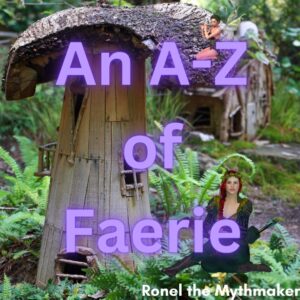
Though I usually use creatures found in folklore as-is with minor adjustments, I had this wonderful idea for a specific Faery race that incorporated a variety of Celtic races, customs and histories. Where possible, I’ll give you the original text that inspired me.
Influence of Celtic Folklore, Mythology, Language and History on the creation of the Galno
The Celts
“Can we live forever – or, is it over when it’s over?
This question is as old as humans, and one traditional and figurative example is the energetic circular forms, triskeles, and spirals from the Celts, showing, for example, unending labyrinths – standing for their belief in infinity of life and longevity. The earliest of such archaeological handcraft commonly accepted as Celtic, was the central European Hallstatt culture (about 800-450 BC), named for the rich grave finds of subjects (of which the energy and freedom decoration was an important element) in highly formalized styles in Hallstatt. The Celts were a diverse group of tribal societies in the Iron Age and Roman-era Europe. Most descriptions of Celtic societies portray them as being divided into three groups: a warrior aristocracy; an intellectual class including professions such as druid, poet and jurist – and everyone else. They were outstanding tillers, rancher, ferric smiths, and developed the iron mining.
The root of their name may be the Common Celtic ‘galno’, meaning power or strength (Galli and Galatae most probably go with Old Irish gal ‘boldness, ferocity’ and Welsh gallu ‘to be able, power’), as they were described by classical writers as fighting like ‘wild beasts’, and as hordes. Celts had a reputation as head hunters: ‘amongst the Celts the human head was venerated above all else since the head was to the Celt the soul, centre of the emotions as well as incessancy of life itself, a symbol of divinity, and of the powers of the other-world. Thus, the Celts were called by the Romans ‘Gauls’, meaning ‘fighting man’ – at the same time they were culturally highly advanced, as manifested, for example, in their artworks and longevity.”
– Modern Biopharmaceuticals: Recent success stories by Jörg Knäblein.
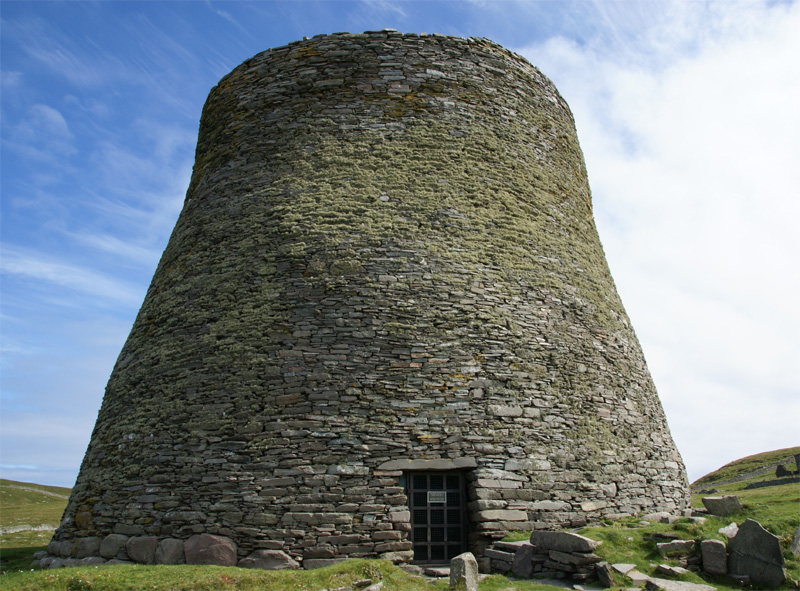
The Celts in a Nutshell by Ronel
Thus their name, Galno, is a Celtic word meaning “power” or “strength” which I think works great for them. Especially since that is the way other Fae see them.
If you have any image of the fierce Celtic warrior in your head, it is most probably inspired by the Greek and Roman historians who first encountered them and wrote about them. This basic image would be of a woad-painted, half-naked, howling warrior that inspires fear and awe in his enemies. You’ll also have a vague idea about druids. When most people think of druids, it is that they got together beneath sacred oaks, harvested mistletoe and supervised human sacrifice (usually by stuffing mistletoe into the unfortunate person’s mouth before drowning them in a bog).
The ancient Celts built various forts to protect their clans against others, for warfare was common. These consisted of duns (stone hill fortresses), crannogs (forts and houses built on stilts in lochs) and brochs (round stone towers, tapering inward as they rise from the ground) to name a few.
It is believed that the Romans grouped the various Celtic tribes (clans) together according to where they lived: Britons in England, Scotti in Ireland and Picts in Scotland.
The Picts
The Encyclopedia of Celtic Mythology and Folklore by Patricia Monaghan
There is some evidence that what we know as Celtic religion and mythology includes vestiges of the beliefs of the apparently non-Celtic ancient people called the Picts, or “painted ones”, a name that may derive from a tradition of tattooing their bodies.
The Picts lived in what is now Scotland, where they left traces in the form of stone carvings of symbolic animals and objects such as bulls and horses, serpents and ravens, hammers and combs; these carvings may have represented religious beliefs or tribal totems. They were allies with the Celtic tribes in fighting the invading Romans; it was against these fierce northern warriors that the great Hadrian’s Wall was erected.
*More can be read in the book.

The Picts in a Nutshell by Ronel
We know from what classical authors wrote that the people from northern Scotland were referred to as “Picts”. They have been shadowy, enigmatic figures throughout history. And by the time the Norsemen invaded and compiled their sagas, the Picts had faded into folklore as a mythical race of fairies.
“Picts” means “painted people”, most likely referring to the fact that they used war paint (made of woad) and tattoos to embellish their bodies.
Before the Romans arrived, the Picts were mostly involved in fighting among themselves. But when the Roman threat came from the south, they united and won the war (Scotland holds the distinction of never falling to the invading armies of Rome, despite many attempts on the part of the Romans).
The Picts were ruled by clan chieftains. The clans were known as Caerini, Cornavii, Lugi, Smertae, Decantae, Carnonacae, Caledonii, Selgovae and Votadini. They lived separately, but when threatened by a common enemy, they would elect a single chief to lead them all. Each clan would still follow their own chief, but each chief would obey the warrior they had all chosen as the group’s leader.
The males of the tribe were all warriors, but when not called upon to defend their clan and land, they were (as were the women) farmers, fishermen and herders.
Julius Ceasar remarked in 55BC: “All the Britons, without exception, stain themselves with woad, which produces a blueish tint; and this gives them a wild look in battle.”
And from stone carvings, we get a general idea of what they wore: women wore ankle length tunics and men wore varied lengths.
All of this leads me to believe that the Picts were a lot like the Woads in the King Arthur movie.

Folklore
Pech
Archaic England: An Essay in Deciphering Prehistory from Megalithic Monuments, Earthworks, Customs, Coins, Place-names and Faerie Superstitions by Harold Bayley.
Our British Picts, the first British tribe known by name to history, are generally supposed to have derived their title because they depicted pictures on their bodies. In West Cornwall there are rude stone huts known locally as Picts’ Houses, but whether these are attributed to the Picts or the Pixies it is difficult to say. In Scotland the “Pechs” were obviously elves, for they are supposed to have been short, wee men with long arms, and such huge feet that on rainy days they stood upside down and used their feet as umbrellas. That the Picts’ Houses in Cornwall were attributed to the Pechs is probable from Scottish belief, ‘Oh, ay, they were great builders the Pechs; they built a’ the auld castles in the country. They stood a’ in a row from the quarry to the building stance, and elka ane handed forward the stanes to his neighbour till the hale was bigget.’
The Encyclopedia of Celtic Mythology and Folklore by Patricia Monaghan
(peht, pict) Scottish folkloric figure. In Lowland Scotland, this name used of the Otherworld creatures otherwise known as fairies apparently derives from an ancient historical people called the Picts. As is common with fairy races, the pech was fair-skinned and red-haired and might be mistaken for a human except that they were extremely short. Despite their dwarfish height, they were strong and agile; they formed great lines in order to haul stones from quarries to construct their castles. Like many Otherworldly peoples, the pechs could not bear sunlight and fled to their residences each dawn.
*More can be read in the book.
Encyclopedia of Fairies in World Folklore and Mythology by Theresa Bane
Pech (variations: Pecht, Peht).
In Scottish Lowland mythology the pech was a short gnome-like fairy being who, although small of stature was extremely strong. Described as having long arms, wide feet, and wild red hair, the pech were believed to have been the builders of the ancient stone megaliths of ancient Scotland. Pechs were strictly nocturnal fairies, as they could not stand the light of day.
*More can be read in the book.
Gnome
The Encyclopedia of Celtic Mythology and Folklore by Patricia Monaghan
Folkloric figure. Not a Celtic creature at all, the gnome found in Celtic lands derives from medieval science and alchemy that imagined creatures appropriate to each of the four elements: salamanders (fire), nereids (water), sylphs (air), and gnomes (earth). The gnomes were thought to live under the earth, working perhaps as miners; the word itself may derive from genomus, “earth-dweller”. They are easily confused with such truly folkloric creatures such as fairies and knockers, but have no real legends attached.
*More can be read in the book.
The Element Encyclopedia of Fairies by Lucy Cooper
Gnomes
Earth-dwellers, variously known as dwarves or goblins in traditional tales, but originally described as earth elementals by the fifteenth-century alchemist and physician Paracelsus. He divided fairies into four groups: the gnomes of the earth, the sylphs of the air, the salamanders of fire, and the undines or nymphs of water. Each elemental represented the pure form of that elemental energy. Elementals were said to be creatures partway between humans and pure spirits. They were made of flesh and blood, and ate, drank, slept and procreated like human beings, but they were capable of superhuman speed and movement, lived longer than humans, and did not have immortal souls.
*More can be read in the book.

Further Reading:
- History: Heart of Scotland
- Picts history: Orkneyjar
- Picts slipping history
- Picts
- Kingdom of the Picts
- What did Picts really wear?
- The Pechs
- Folklore Names
- Gnome
- Gnome
- Gnome
- Faerie Folklore: the Gnomes
- The Picts
Modern Culture and the creation of the Galno
Of course, that’s a lot to think to tie together. So where did I originally get the idea to go and look at all of that? Most probably when I read through The Folklore of Discworld by Terry Pratchett and Jacqueline Simpson.
The Wee Free Men or the Nac Mac Feegle are loosely based on the Pechs, so a bit of history on the folklore (from our world) is included in the account of the folklore of the Wee Free Men.
“For many centuries, one of their favourite places was an area of the Earth called Scotland. They were already there in the time of the Ancient Romans, who spoke of them as picti, ‘painted men’; Julius Caesar himself records that the tribes of Northern Britain had ‘designs carved into their faces by iron’, a clear reference to tattooing. Needless to say, they refused to submit to the Empire, conducting such a persistent guerrilla war that the Romans gave up hope of conquering Scotland, and the Wee Free Men remained both wee and free.
Later generations of Scottish humans were well aware of their presence, and called them Pehts, Pechs, Pechts or Picts. They themselves like the last version best, and have adopted it for their own use, in the form of ‘pictsies’. Several Scotsmen have described the Pechs, who were somewhat taller than the Discworld clans, but in other respects very similar. They were ‘unco wee bodies, but terrible strang’, wrote a certain James Knox in 1831, and lived in underground chambers and burial mounds. Indeed, for generations the Scots took for granted that any odd stone structures found underground were ‘Picts’ houses’. Robert Chambers, in his Popular Rhymes of Scotland (1870), wrote: ‘Short wee men they were, wi’ red hair, and long arms, and feet sae braid that when it rained they could turn them up owre their heads, and then they served for umbrellas. The Pechs were great builders; they built a’ the auld castles in the kintry.’
This refers to brochs, a type of ancient round tower, which Scotsmen called ‘Picts’ castles’. Why they built them is a mystery, since they never lived in them; perhaps they had struck some bargain with the local human ruler, broch-building in exchange for hunting rights, or the like.”
– The Folklore of Discworld by Terry Pratchett and Jacqueline Simpson.
There’s a lot more in the chapter about the Nac Mac Feegle, but this is what stood out the first time I read it.

The knights and Woads in the King Arthur movie always impress me when they go up against the Saxon army.
And though many dislike the movie for its creative liberties with history and folklore, as a writer I don’t mind that much. (Seeing as I rarely know the day of the week we’re at, why would historical inaccuracies in a movie bother me – it’s all Dark Age, so what does a century or two matter?)
The knights and Woads are wild, fearless and will fight to the death for what is theirs. And that is exactly why I like the movie. So I incorporated those traits in the Galno.
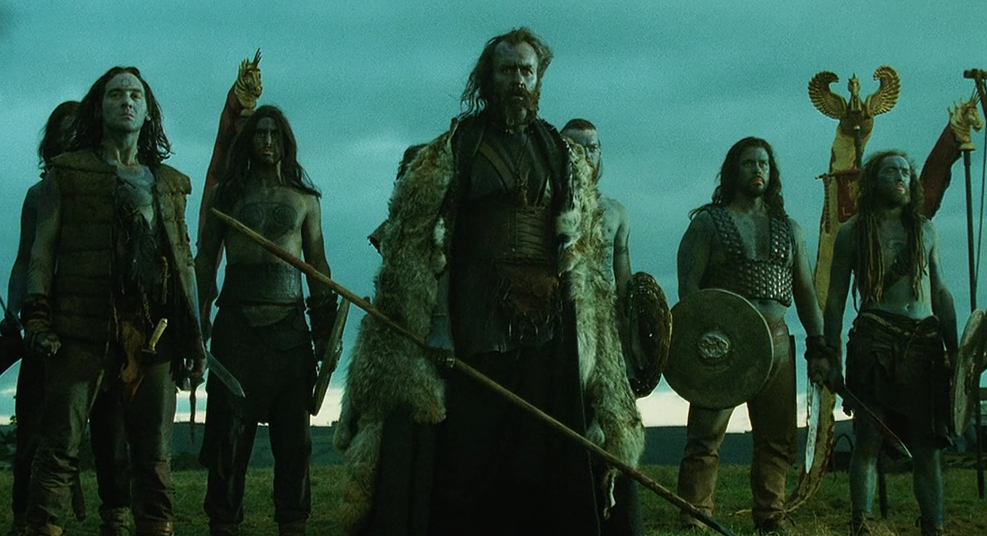
In a lot of my research, including that of the Nac Mac Feegle, the Picts and Pechs and so on are described as wild and fierce. And that they love to drink, eat good food and enjoy lots of fighting among themselves.
Much like the clans in Brave.

My Galno stick to that tradition.
And, of course, the Galno are great warriors (like the Picts, the Celts, the Nac Mac Feegle and the Pechs).
The Galno in My Writing
The Galno started out as your average medieval Fae living in a broch and basically mimicking the Picts and the Celts.
Then I got tired of their almost barbaric ways and I made them almost knightly with proper manners and gallantry, but keeping the fierce warrior background. I also retained their love of brawling – it makes them endearing.
I recently stepped away from the pure medieval way of life, a character or two who’d prefer to dress a little differently while still keeping to clan colours making themselves heard. (So a pair of high heels with clan colours won’t be as strange as at first thought…)
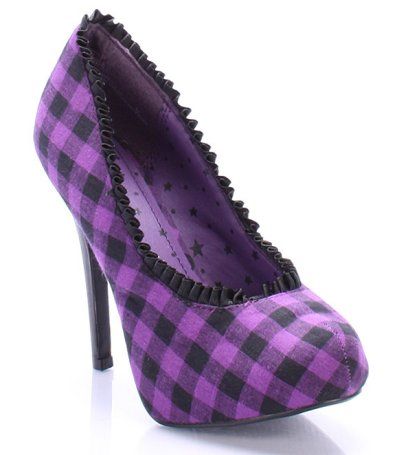
Like all characters, they’re continually evolving as a group.
Origin of the Fae: The Galno
Short, warrior Fae who embody the Scottish medieval way of life. Though there are a few rebels who’ve kept up with modern technology and fashion.
Each clan has their own shade of purple to wear. This is mostly shown through the tartan claimed by each clan. Each clan has their own shade of blue eyes.
Most all Galno have black hair, but some who embody summer have golden hair.
All the clans live in Kregora on a heath covered with heather. Kregora is a broch built out of special glowing stone. Kregora is situated in a part of Faerie located in the Highlands of Scotland. Humans know enough to stay away from this different realm located in their own world.
The Galno were Seelie once upon a time, but are now Solitary Fae. This means that they have to pay a Tithe to live on Court Land (all of Faerie belong to the two Courts).
They believe in honour, bravery, courtesy and gallantry toward women.
The Clans are led by three of the strongest Lairds: the MacKeltar, the MacGregor and the MacKinnion.
All the research, planning, thought and time that went into these characters (though I’m only looking at them as a whole today) was well worth it. They feature in most of my work because they embody all that is good – unlike the Seelie Knights who’ve lost all balance (though, that’s a post for another time).
See them in action:
Once… Tales, Myths and Legends of Faerie

Jamie immediately knew that they were in the human realm. The flowers did not possess any magic. Sadness passed through him as they followed the MacGregor.
‘The others should’ve made it out safely. I think we caused quite a distraction.’
‘Did they use the other passage?’ Jamie asked. The other Galno nodded. He’d hoped that the MacGregor would take charge while he was taking a farewell walk through Faerie. And he had.
A violet-blue mist covered the woodland floor and most of the heath. Bluebells. A few sprigs of white could be seen in places. Jamie smiled. He knew the folklore the humans held: white bluebells indicate where faeries sat down. Yes, he thought, this is the right place for me to stay awhile.
‘Kregora,’ the MacGregor said.
Leaves shifted and the air shimmered. A tower-like structure appeared. A broch, Jamie realised.
‘Let me give you the tour.’
‘In good time. I…’ He shrugged and turned to watch the heath, the mountains and the encroaching mist.
Rumour Has It, Once… Tales, Myths and Legends of Faerie, Ronel Janse van Vuuren
I hope you’ve enjoyed this look into my writing: the research, the folklore, the influences and imagination that goes into creating a new race of beings. You can also check out the Pinterest board I created about them. Any questions? What do you think of the Galno?
You can listen to this post on my podcast:
You can now support my time in producing folklore posts (researching, writing and everything else involved) by buying me a coffee. This can be a once-off thing, or you can buy me coffee again in the future at your discretion.
Want a taste of my writing? Sign up to my newsletter and get your free copy of Unseen, Faery Tales #2.


No-one writes about the fae like Ronel Janse van Vuuren.




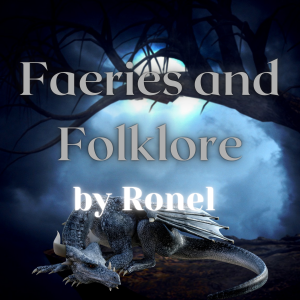

My problem with the King Arthur movie was that they used Sarmatians, based on “Scythia to Camelot” which was based on the Nart sagas, except no one actually did their homework on any of those cultures… 😀 But I do love Wee Fee Men!
The Multicolored Diary
I know, once you start analysing the movie it loses all of its entertainment value. The Wee Free Men are awesome 🙂
A fascinating post! I do have a copy of The Folklore Of Discworld somewhere, must dig it up and re-read. Apparently, his co-author was a woman he met while on one of his book tours. He was looking for as many rhymes as possible about magpies, for his novel Carpe Jugulum, and she knew a whole lot of them.
I adore the Nac Mac Feegle! I have reread the books over and over.
I think the Woads in that film were meant to be Picts?
I seriously need to reread my Discworld books 🙂
Yeah, like Zalka said: they didn’t do their research on any of those cultures properly for the movie.
I like Celt stories, and those shoes too 😉
L is for Landscapes
I’m glad you enjoyed it 🙂
Thanks for sharing some of your thinking process in coming up with these characters. It’s interesting to see where you find inspiration and how you put it together.
Black and White (Words and Pictures)
I’m glad you found it interesting 🙂